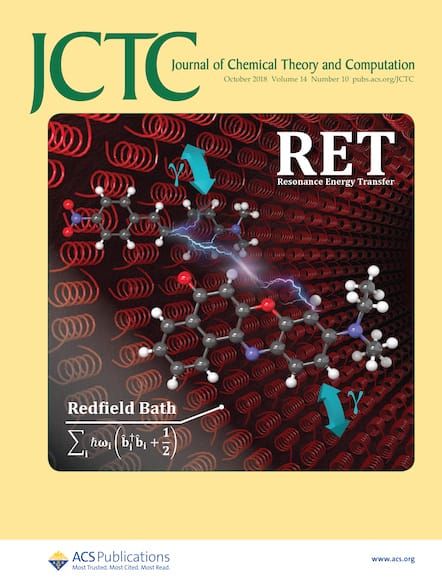小分子量子逆算法的数值研究
IF 5.5
1区 化学
Q2 CHEMISTRY, PHYSICAL
引用次数: 0
摘要
我们评估了量子反演(Q-Inv)算法的准确性,在该算法中,参考波函数的Ĥ-k乘法被傅里叶变换的e-iλĤ乘法所取代,它是积分参数和迭代功率k的函数,适用于各种系统,包括方形几何条件下的H2、LiH、BeH2和臭名昭著的H4分子。我们进一步考虑了采用高斯四则运算作为另一种积分方法的可能性,并将其与采用梯形积分的结果进行了比较。我们将 Q-Inv 算法与使用Ĥ-1 逆(I-Iter)的逆迭代法和通过下-上分解的精确逆迭代法进行了比较。能量值以哈密顿的期望值进行评估。结果表明,Q-Inv 方法提供的能量结果比 I-Iter 方法低,直到一定的 k,之后能量会增加,这是由于数值积分中的误差取决于积分区间。事实证明,高斯四则运算和梯形积分相结合的方法更能有效地达到收敛,同时减少运算次数。对于像 H4 这样 Q-Inv 无法达到预期误差阈值的系统,我们提出了 Q-Inv 和 I-Iter 方法的组合,以较低的计算成本进一步减少 k 的误差。最后,我们总结了处理未知系统时的推荐程序。本文章由计算机程序翻译,如有差异,请以英文原文为准。

Numerical Investigation of the Quantum Inverse Algorithm on Small Molecules
We evaluate the accuracy of the quantum inverse (Q-Inv) algorithm, in which the multiplication of Ĥ–k to the reference wave function is replaced by the Fourier transformed multiplication of e–iλĤ, as a function of the integration parameters and the iteration power k for various systems, including H2, LiH, BeH2 and the notorious H4 molecule at square geometry. We further consider the possibility of employing the Gaussian-quadrature rule as an alternate integration method and compared it to the results employing trapezoidal integration. The Q-Inv algorithm is compared to the inverse iteration method using the Ĥ–1 inverse (I-Iter) and the exact inverse by lower-upper decomposition. Energy values are evaluated as the expectation values of the Hamiltonian. Results suggest that the Q-Inv method provides lower energy results than the I-Iter method up to a certain k, after which the energy increases due to errors in the numerical integration that are dependent on the integration interval. A combined Gaussian-quadrature and trapezoidal integration method proved to be more effective at reaching convergence while decreasing the number of operations. For systems like H4, in which the Q-Inv cannot reach the expected error threshold, we propose a combination of Q-Inv and I-Iter methods to further decrease the error with k at lower computational cost. Finally, we summarize the recommended procedure when treating unknown systems.
求助全文
通过发布文献求助,成功后即可免费获取论文全文。
去求助
来源期刊

Journal of Chemical Theory and Computation
化学-物理:原子、分子和化学物理
CiteScore
9.90
自引率
16.40%
发文量
568
审稿时长
1 months
期刊介绍:
The Journal of Chemical Theory and Computation invites new and original contributions with the understanding that, if accepted, they will not be published elsewhere. Papers reporting new theories, methodology, and/or important applications in quantum electronic structure, molecular dynamics, and statistical mechanics are appropriate for submission to this Journal. Specific topics include advances in or applications of ab initio quantum mechanics, density functional theory, design and properties of new materials, surface science, Monte Carlo simulations, solvation models, QM/MM calculations, biomolecular structure prediction, and molecular dynamics in the broadest sense including gas-phase dynamics, ab initio dynamics, biomolecular dynamics, and protein folding. The Journal does not consider papers that are straightforward applications of known methods including DFT and molecular dynamics. The Journal favors submissions that include advances in theory or methodology with applications to compelling problems.
 求助内容:
求助内容: 应助结果提醒方式:
应助结果提醒方式:


